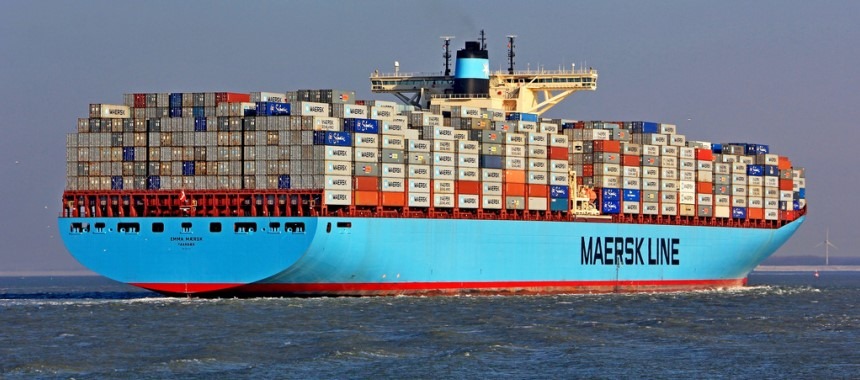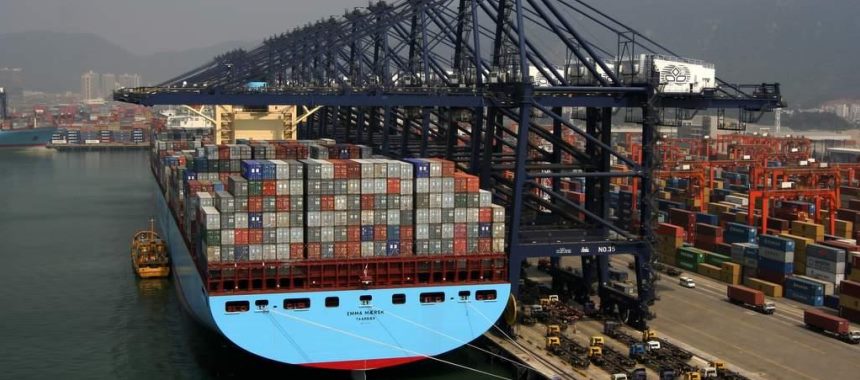Container ship Emma Maersk - the largest cargo ship in the world

Today, ninety-five percent of all cargo is transported by sea. Container ships are relatively young types of vessels. With an average age of 10 years, «Emma Maersk» is considered the youngest among other container ships of its kind.
Container ship «Emma Maersk»: construction, innovations, and achievements
The container ship «Emma Maersk,» owned by one of the world's largest shipping companies, «Maersk Line,» is currently the largest container ship in the world. It was built at the Lindoe shipyard in Denmark, which is part of the «Odense Steel Shipyard Ltd» company, on August 16, 2006. This shipbuilding company has developed its own working methods that are recognized worldwide for quality management and technological advancement. To achieve this, the company's employees collaborate with scientific research institutions and participate in joint projects aimed at implementing innovative technologies.
«Emma Maersk» became the first in a new series of large-tonnage vessels with a highly automated management system. It is equipped with modern computer systems to ensure efficient operation. The overall interior of the cargo ship is made of the highest quality materials. The exterior appearance of the ship features a design characteristic of container ships built at the Odense Steel Shipyard Ltd.
The container vessel «Emma Maersk» was named «Ship of the Year» at the presentation held in London in 2007, organized by the popular European magazine «Lloyd's List.» The creators, during the construction of this transport ship, set new standards in environmental protection, safety, and efficiency, which are crucial in the transportation of various goods. These include an exhaust gas recirculation system, which helped reduce emissions of harmful substances into the atmosphere, resulting in increased engine power and reduced fuel consumption. Another innovation was the vessel's hull treated with a special silicone coating, which led to an unexpected result — the reduction of water resistance, resulting in fuel savings of 1,200 tons per year. The cargo ship can accommodate 13,500 containers, instead of the planned 11,000, thanks to its excellent seafaring qualities and 22 sections on board. The container vessel is always a welcome guest at the ports of Bremerhaven, Rotterdam, Los Angeles, Gothenburg, Argus, Ningbo, Xiamen, and Tanjung Pelepas.
Capabilities of the container vessel «Emma Maersk» include:
Loading the container vessel «Emma Maersk» is possible with twenty giant cranes simultaneously. While an average container vessel can accommodate a thousand twenty-foot containers, the cargo capacity of the «Emma Maersk» is 13,500 TEUs (Twenty-foot Equivalent Units). This is nearly 4,000 containers more than the previous leader, «Xin Shanghai.» The average cost of a container vessel with a capacity of 4,000 TEUs is $61 million, while for 8,000 TEUs, it is $116 million.
«Emma Maersk» is impressive. It is the largest container ship in the world. Each submerged marine container is the size of a trailer. The deck of the cargo vessel carries fewer containers, with the majority of them located in the hold. If all the maritime containers were unloaded from the deck of the container ship, it could accommodate two space shuttles. Proper loading is an art that applies to everything from toys to automobiles.
There are fundamental rules for handling cargo: the heaviest marine containers are placed at the bottom to keep the container ship stable; hazardous goods and flammable mixtures are placed on the deck, as nobody wants an explosion in the hold. If more than seven rows of maritime containers are placed in front of the navigating bridge, the captain of the container ship won't be able to see anything. Having too many or too few containers in the center will affect the draft of the cargo vessel. All these rules apply before the voyage begins. Rough seas, unpredictable currents and winds, all these factors make container shipping a risky business with the potential for colossal losses. It is always necessary to adhere to a tight schedule and specific rules.
The container ship «Emma Maersk» is a considerably wide vessel, and when approaching a port, maneuvering and positioning a multi-ton cargo ship becomes a challenging task. Imagine having to navigate a container ship that is as long as four football fields.
«Emma Maersk» at the terminal:
When the container ship «Emma Maersk» is berthed, a squadron of equipment begins its work — unloading the necessary maritime containers. They have several hours at their disposal. And at the Rotterdam container terminal, container unloading is carried out using high-tech machines. In order for the container ship to continue its journey, the «metal servants» must unload the cargo swiftly. Each cargo crane can lift up to 40 tons. Down below, transport of the «AGV» class awaits the maritime container. It is a driverless, automatically controlled transport. Control is performed from an enclosed grid-road. Some maritime containers are directed to their final destination. Other containers suspected of smuggling undergo scanning, which is 25 times more powerful than a regular scanner.
 Emma Maersk at the terminal
Emma Maersk at the terminal
Soon, the deck of the container ship «Emma Maersk» will be filled with a wide variety of goods, and the maritime journey will continue. After some time, the products transported by the largest vessel will reach the stores across three continents.
Just a few hundred years ago, people couldn't even imagine that metal could float, but the builders have demonstrated with the example of the container ship «Emma Maersk» that their creation is capable of not only «floating» but also performing useful work, overcoming any waves and obstacles.
Technical specifications of the containership «Emma Maersk»:
- Designed tonnage — 170,800 tons
- Deadweight tonnage — 156,907 tons
- Length — 396.8 m
- Width — 56 m
- Draft — 13.7 m
- Propulsion system — «Wartsila RT-Flex»
- Power — 110,000 horsepower
- Speed — 25.6 knots
Incident:
During the construction of the container vessel «Emma Maersk,» a fire broke out in the superstructure of the cargo ship on June 9, 2006. The container ship was on the brink of destruction, but the firefighters quickly and effectively performed their duties and saved the vessel. Today, it is performing its tasks excellently.
- Comments
 en
en ru
ru uk
uk




